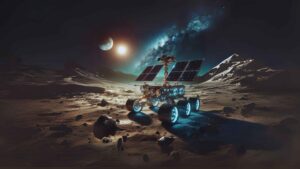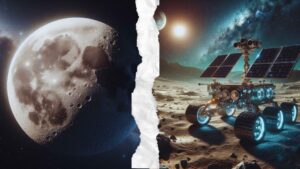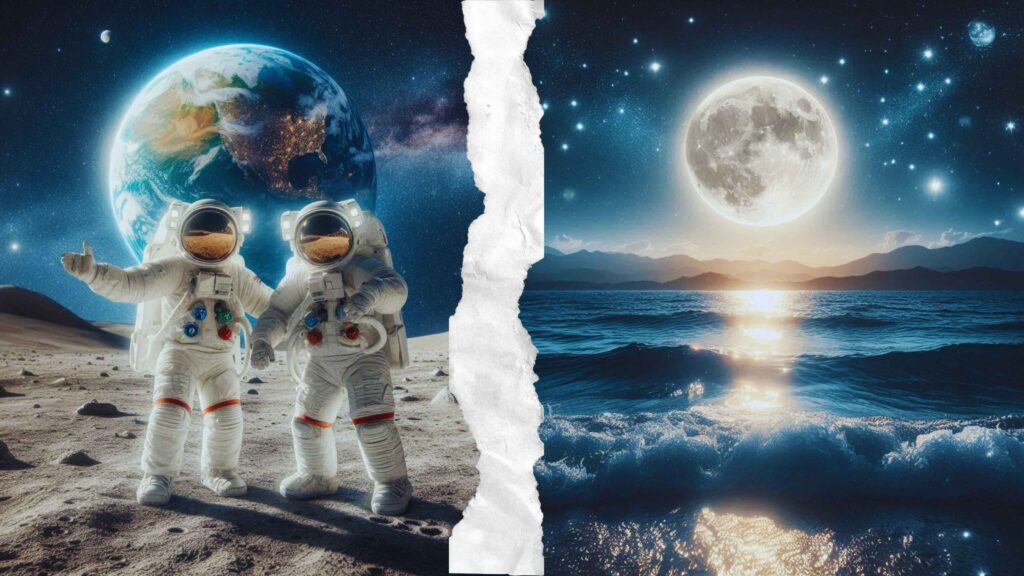The Moon, our nearest celestial neighbor, has intrigued human beings for centuries. It illuminates the night sky and has a strong influence on our world. Human beings from various civilizations have developed myths, legends, and scientific research to learn about the Moon. But why is the Moon unique? How did it originate? What are its phases? How does it influence life on Earth? And how have human beings explored it throughout history?
In this blog, we shall reply to all these questions in easy language. This article is presented to you by Anee’s School, one of the top schools in Mohali and Kharar, who work hard to make learning a fun and interactive process for the students.
Moon Formation

Theia never existed in Earth’s sky previously. Experts are now sure that it was formed about 4.5 billion years ago. Most widely accepted is the Giant Impact Hypothesis. According to this hypothesis, a body as large as a planet, Theia, collided with Earth. Such a powerful impact caused a massive part of Earth to break off and be thrown into space. With the passage of time, the waste accumulated under the force of gravity and formed what we know today as the Moon.
The face of the Moon is interwoven with craters, mountains, and plains. They were created by space rocks that collided with it over billions of years. Since the Moon has no atmosphere or air, there is no weather to erode these craters, and therefore they continue to be intact for millions of years.
You may also like: “Cultivating Leadership in Young Minds for a Brighter Future.“
Phases of the Moon
When we observe the Moon in the evening sky, we notice that its shape seems to change each night. These changes are referred to as phases of the Moon. The Moon does not emit light; it glows because it reflects sunlight. As the Moon orbits Earth, various portions of it are illuminated by the Sun, which produces the various phases.
The Moon passes through eight chief phases in a cycle that takes approximately 29.5 days. They are:
🌕 New Moon – The Moon is positioned between the Earth and the Sun, hence we cannot spot it.
🌕 Waxing Crescent – A tiny segment of the Moon is visible.
🌕 First Quarter – Half of the Moon is illuminated.
🌕 Waxing Gibbous – Over half of the Moon is apparent.
🌕 Full Moon – The whole Moon is illuminated and shines bright in the sky.
🌕 Waning Gibbous – The lit portion of the Moon begins to decrease.
🌕 Last Quarter – Half of the Moon is illuminated again but on the other side.
🌕 Waning Crescent – Just a small section of the Moon is visible before it vanishes once more.
This process repeats every month, producing the lovely Moon phases we observe in the sky.
How the Moon Affects Earth

The Moon is not an attractive thing hanging in the sky; it has a direct influence on our planet. Here are some ways that the Moon impacts Earth:
Tides
The Moon’s gravity attracts Earth’s oceans, producing high tides and low tides. When the Moon is directly above a region of the ocean, the ocean water is attracted to it, resulting in a high tide. Ocean water movement is essential for aquatic life and human activities such as fishing and shipping.
Earth’s Axis Stability
The Moon stabilizes Earth’s axis. Without the Moon, Earth’s tilt would constantly shift, which would cause drastic climate changes. The presence of the Moon guarantees Earth’s seasons remain stable over a long time.
Nighttime Illumination

Prior to the invention of electricity, humans relied on moonlight in order to view at night. Even now, a full bright moon can illuminate the sky and guide travelers, animals, and even nighttime workers who toil at night.
Moon Exploration
You may also like: “Discovering Earth: Our Home in the Universe | Anee’s School“
For centuries, human beings have been fascinated by the Moon. The early astronomers studied it through telescopes, but the actual adventure started in the 20th century when space agencies began launching missions to explore it.
Major Milestones in Moon Exploration
🚀 1959 – Luna 2: The Soviet Union’s Luna 2 was the first man-made object to travel to the Moon.
🚀 1966 – Luna 9: The initial successful soft landing on the Moon.
🚀 1969 – Apollo 11: The United States’ NASA launched Neil Armstrong and Buzz Aldrin to the Moon. Armstrong became the first human to set foot on the Moon, uttering the now-famous words: “That’s one small step for man, one giant leap for mankind.”
🚀 2008 – Chandrayaan-1: India’s maiden mission to the Moon, which found water molecules on the lunar surface.
🚀 2023 – Chandrayaan-3: India’s ISRO achieved a successful landing close to the Moon’s South Pole, joining only a few nations to have accomplished a soft landing.
Currently, several nations are planning upcoming missions to the Moon, including establishing a lunar base where astronauts can reside and work for extended durations.
Fun Facts About the Moon
🌖 The Moon is approximately 384,400 km from Earth.
🌖 The Moon is gradually drifting away from Earth at a speed of 3.8 cm per year.
🌖 The same face of the Moon always presents itself to Earth due to a process known as synchronous rotation.
🌖 The Moon is not inhabited by air, hence there is no sound on the Moon.
🌖 A day on the Moon (one complete rotation) takes approximately 29.5 Earth days.
🌖 The initial person to have driven on the Moon was astronaut David Scott in 1971.
🌖 The surface temperature of the Moon varies from -173°C at night to 127°C in the daytime.
Conclusion
The Moon is far more than a lovely celestial body in the night sky. It has been a key factor in the history of Earth and still affects our planet in numerous ways. Learning about the Moon makes us realize how important it is in our lives and our future in space exploration.
At Anee’s School, one of the top schools in Mohali and Kharar, we are committed to inculcating curiosity and love for learning. Learning about the Moon and space science inspires students to dream big and venture beyond the boundaries of the Earth. Who knows? Perhaps one of our students will be among the next group of astronauts to venture into the Moon!
Read more important blogs from Anee’s School:








